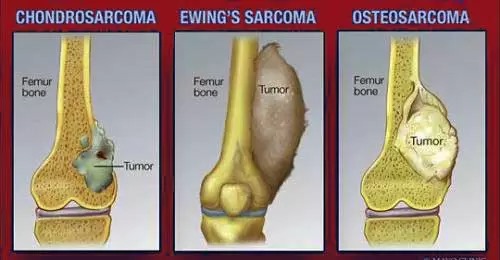
Dr. Waseem Abbas
Cancer Treatment Specialist
Director Research, Max Hospital, Shalimar Bagh
How to contact me
Max Superciality Hospital, FC 50, C and D Block, Shalimar Place Site, Shalimar Bagh, New Delhi, Delhi 110088
Phone: +91 98112 42729
Email: drabbasdoc@gmail.com
Search this website
Common Cancers in India
Get a free E-consultation about lung cancer immunotherapy in Delhi
Bone Cancer

Bone cancer can begin in any bone in the body, but it most commonly affects the pelvis or the long bones in the arms and legs. Bone cancer is rare, making up less than 1 percent of all cancers. In fact, noncancerous bone tumors are much more common than cancerous ones.
Cancers that form in the bone itself are called primary bone cancers. Many tumors that begin in organs or other parts of the body can spread to the bones, as well as other body parts. These growths are called secondary or metastatic bone cancers. Breast, prostate and lung tumors most commonly metastasize (spread) to the bones.
How common is bone cancer?
Bone cancers are rare. They make up less than 1% of cancers in the United States. While they can develop at any age, they are more common in children, teenagers and young adults than in older adults.
Where does bone cancer usually start?
It depends on which type of bone cancer you have. There are four types of primary bone cancer:
- Osteosarcoma
- Ewing sarcoma
- Chondrosarcoma
- Chordoma

Can a benign bone tumor become cancerous?
Yes, but it’s not common. Even so, people with benign bone tumors may still need treatment to reduce the risk of other issues such as weak bones, joint problems and destruction of healthy bone tissue.
What should I know about bone cancer staging?
Staging is determined by the size and location of the tumor, and whether or not cancer has spread to other areas. Primary bone cancer is categorized into four stages:
Stage 1: The tumor is low-grade, and the cancer cells are still localized.
Stage 2: The cancer cells are still localized, but the tumor is high-grade.
Stage 3: The tumor is high-grade and cancer has spread to other areas within the same bone.
Stage 4: Cancer had spread from the bone to other areas of the body, such as the lungs or liver.

How is bone cancer treated?
Bone cancer treatment depends on the type of cancer, whether it has spread and if so, where. People with bone cancer often work with a team of healthcare providers to treat the condition. This group includes doctors who specialize in cancer (oncologists and radiation oncologists) and doctors who specialize in bones and joints (orthopaedic surgeons).
Bone cancer treatment typically involves a combination of approaches. The type and duration of these treatments vary depending on several factors, including the type of bone cancer, the size of the tumor and whether it has spread to other parts of the body. The treatments most commonly used include:
Surgery: Your surgeon removes the tumor and some healthy tissue around it. They can also repair or rebuild affected bones with real or artificial bone grafts. Sometimes, an entire limb must be removed to treat cancer. In this case, an artificial limb (prosthetic) can be used. Sometimes repeat surgery is needed if all of the cancer cells were not removed the first time around.
Radiation therapy: This treatment shrinks the tumors with high doses of X-rays. Healthcare providers often use radiation before surgery to shrink the tumor so less tissue has to be removed.
Chemotherapy: This type of treatment kills cancer cells throughout the body with medicine. People usually receive this medicine by swallowing a pill or having it injected into a vein. Your provider can use chemotherapy to treat primary bone cancers or bone cancers that have spread.
Can bone cancer be prevented?
Since experts don’t really know what causes bone cancer, there is currently no known way to prevent it. And because radiation therapy (another known cause of bone cancer) is necessary for treating other types of cancer, it can’t be avoided altogether.
